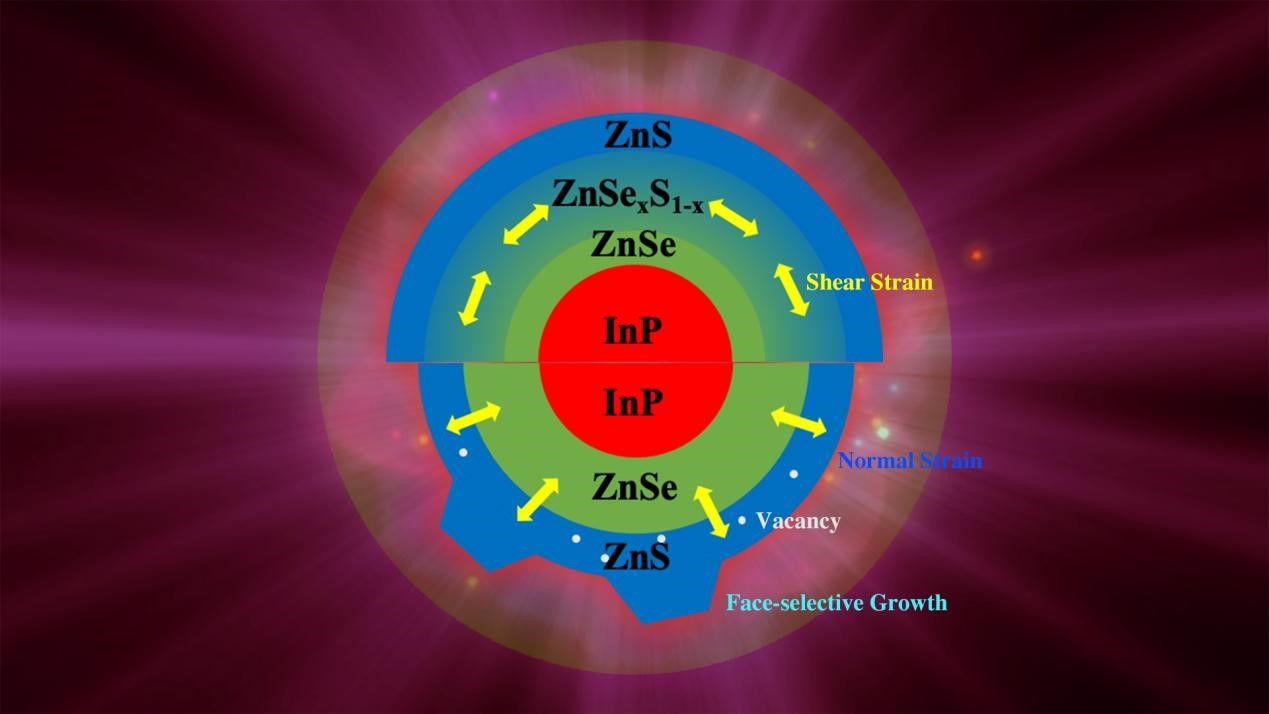Quantum dots, as nanomaterials with excellent luminescent properties, have been widely used in high-definition displays, lighting, and bioimaging. However, the field continues to face significant industry challenges and technical bottlenecks. Traditional cadmium-based quantum dots are increasingly restricted by environmental regulations due to their toxicity, while mainstream cadmium-free indium phosphide (InP) quantum dots still suffer from technical limitations such as broad emission spectra and poor stability, which severely restrict their commercial application.

Chair Professors Xiao Wei Sun’s research team from the Department of Electronic and Electrical Engineering and the Institute of Nanoscience and Applications, together with Chair Professor Lars Samuelson’s team from the same institute at the Southern University of Science and Technology (SUSTech), has achieved a significant breakthrough in the field of quantum dot light-emitting materials. By innovatively designing a strain-engineered gradient shell structure, the team successfully synthesized InP quantum dots with high brightness, narrow emission, and high stability, providing a key material solution for next-generation, environmentally friendly display technologies.
Their findings, entitled “InP Quantum Dots with a Strain-Engineered Gradient Shell for Enhanced Optical Performance and Stability,” have been published in Nano Letters.
Innovative structural design enables performance gains
The research team innovatively proposed a gradient alloy shell structure (InP/ZnSe/ZnSeₓS₁₋ₓ/ZnS). By precisely controlling the compositional gradient of the shell, the interfacial strain caused by lattice mismatch was effectively alleviated, defect density was significantly reduced, and uniform coating of a thick ZnS shell was achieved.
This design enabled the quantum dots to achieve a photoluminescence quantum yield of over 80%, a narrow full width at half maximum (FWHM) of 45 nm, and excellent stability under accelerated aging tests involving high temperature, high humidity, and blue light irradiation. They retained 78% of their initial luminescence intensity after 214 hours, demonstrating nearly double the stability compared to traditional structures.
Using various characterization techniques such as Raman spectroscopy, geometric phase analysis (GPA), time-resolved photoluminescence (TRPL), and X-ray photoelectron spectroscopy (XPS), the researchers systematically revealed the influence of strain distribution on quantum dot growth and defect formation. This provides important theoretical guidance for the design of high-performance quantum dots.
This achievement not only advances fundamental studies in quantum dot materials but also lays a solid foundation for the development of high-performance, environmentally friendly quantum dot display devices, holding significant scientific and application value.
Ph.D. candidate Xijian Duan is the first author of the paper, while Chair Professors Xiao Wei Sun and Lars Samuelson, along with Postdoctoral Researcher Lei Jin, are the corresponding authors.
Paper link: https://pubs.acs.org/doi/10.1021/acs.nanolett.5c03042
To read all stories about SUSTech science, subscribe to the monthly SUSTech Newsletter.
Proofread ByAdrian Cremin, Yuwen ZENG
Photo ByYan QIU